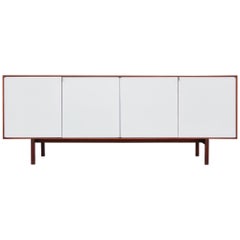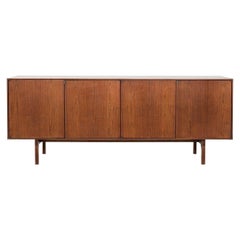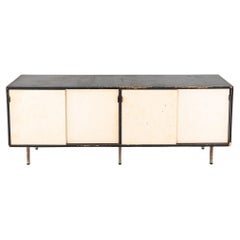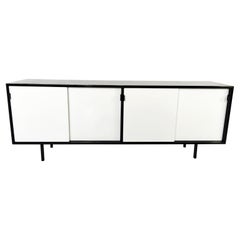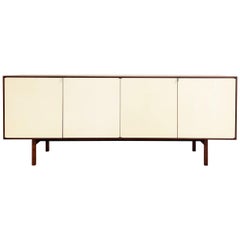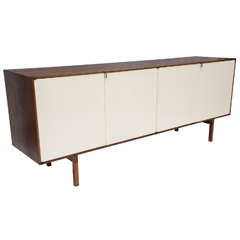Florence Knoll Model 541 Cabinet
Vintage 1960s American Mid-Century Modern Cabinets
Metal
Vintage 1960s American Modern Cabinets
Steel
Vintage 1950s American Modern Credenzas
Steel
Vintage 1950s American Mid-Century Modern Credenzas
Leather, Wood
Recent Sales
Vintage 1970s American Mid-Century Modern Cabinets
Brass, Chrome
Vintage 1950s American Cabinets
Aluminum
Vintage 1950s American Mid-Century Modern Credenzas
Chrome
Vintage 1960s American Mid-Century Modern Cabinets
Metal
Mid-20th Century American Mid-Century Modern Credenzas
Maple, Walnut
Mid-20th Century North American Mid-Century Modern Credenzas
Steel
Mid-20th Century North American Mid-Century Modern Credenzas
Walnut
Vintage 1950s American Mid-Century Modern Cabinets
Walnut
Vintage 1950s American Cabinets
Mid-20th Century German Mid-Century Modern Credenzas
Walnut
Mid-20th Century American Mid-Century Modern Credenzas
Walnut
Vintage 1950s American Mid-Century Modern Apothecary Cabinets
Walnut
Mid-20th Century American Mid-Century Modern Sideboards
Chrome
Vintage 1960s Mid-Century Modern Credenzas
Walnut, Paint
People Also Browsed
Early 2000s American Mid-Century Modern Stools
Steel, Chrome
Mid-20th Century French Mid-Century Modern Stools
Steel
2010s German Mid-Century Modern Chandeliers and Pendants
Brass
2010s Dutch Modern Side Tables
Travertine
Vintage 1980s Italian Bauhaus Dining Room Chairs
Chrome, Metal, Steel
2010s Austrian Jugendstil Chandeliers and Pendants
Silk
21st Century and Contemporary Austrian Mid-Century Modern Floor Lamps
Iron, Brass
20th Century Swedish Scandinavian Modern Dining Room Chairs
Brass
Vintage 1930s French Art Deco Armchairs
Oak
Vintage 1950s Italian Mid-Century Modern Wall Mirrors
Mirror, Teak
21st Century and Contemporary Portuguese Modern Dining Room Chairs
Beech, Chenille, Wood, Fabric
Late 20th Century Mid-Century Modern Side Tables
Leather
Vintage 1930s Italian Art Deco Sofas
Velvet, Wood, Burl
Vintage 1940s French Art Deco Dining Room Chairs
Velvet, Oak
2010s French Desks and Writing Tables
Scrap Wood
Vintage 1930s American Art Deco Side Tables
Walnut, Lacquer
Florence Knoll for sale on 1stDibs
Architect, furniture designer, interior designer, entrepreneur — Florence Knoll had a subtle but profound influence on the course of mid-century American modernism. Dedicated to functionality and organization, and never flamboyant, Knoll shaped the ethos of the postwar business world with her skillfully realized office plans and polished, efficient designs for sofas, credenzas, desks and other furnishings.
Knoll had perhaps the most thorough design education of any of her peers. Florence Schust was orphaned at age 12, and her guardian sent her to Kingswood, a girl’s boarding school that is part of the Cranbrook Educational Community in suburban Detroit. Her interest in design brought her to the attention of Eliel Saarinen, the Finnish architect and head of the Cranbrook Academy of Art.
Saarinen and his wife took the talented child under their wing, and she became close to their son, the future architect Eero Saarinen. While a student at the academy, Florence befriended artist-designer Harry Bertoia and Charles and Ray Eames. Later, she studied under three of the Bauhaus masters who emigrated to the United States. She worked as an apprentice in the Boston architectural offices of Walter Gropius and Marcel Breuer; Ludwig Mies van der Rohe taught her at the Illinois Institute of Technology.
In 1941, she met Hans Knoll, whose eponymous furniture company was just getting off the ground. They married in 1946, and her design sense and his business skills soon made Knoll Inc. a leading firm in its field. Florence signed up the younger Saarinen as a designer, and would develop pieces by Bertoia, Mies and the artist Isamu Noguchi.
Florence Knoll's main work came as head of the Knoll Planning Group, designing custom office interiors for clients such as IBM and CBS. The furniture she created for these spaces reflects her Bauhaus training: the pieces are pure functional design, exactingly built; their only ornament from the materials, such as wood and marble. Her innovations — the oval conference table, for example, conceived as a way to ensure clear sightlines among all seated at a meeting — were always in the service of practicality.
Since her retirement in 1965, Knoll received the National Medal of Arts, among other awards; in 2004 the Philadelphia Museum of Art mounted the exhibition “Florence Knoll: Defining Modern” — well deserved accolades for a strong, successful design and business pioneer. As demonstrated on these pages, the simplicity of Knoll’s furniture is her work’s great virtue: they fit into any interior design scheme.
Find vintage Florence Knoll sofas, benches, armchairs and other furniture on 1stDibs.
Finding the Right Storage-case-pieces for You
Of all the vintage storage cabinets and antique case pieces that have become popular in modern interiors over the years, dressers, credenzas and cabinets have long been home staples, perfect for routine storage or protection of personal items.
In the mid-19th century, cabinetmakers would mimic styles originating in the Louis XIV, Louis XV and Louis XVI eras for their dressers, bookshelves and other structures, and, later, simpler, streamlined wood designs allowed these “case pieces” or “case goods” — any furnishing that is unupholstered and has some semblance of a storage component — to blend into the background of any interior.
Mid-century modern furniture enthusiasts will cite the tall modular wall units crafted in teak and other sought-after woods of the era by the likes of George Nelson, Poul Cadovius and Finn Juhl. For these highly customizable furnishings, designers of the day delivered an alternative to big, heavy bookcases by considering the use of space — and, in particular, walls — in new and innovative ways. Mid-century modern credenzas, which, long and low, evolved from tables that were built as early as the 14th century in Italy, typically have no legs or very short legs and have grown in popularity as an alluring storage option over time.
Although the name immediately invokes images of clothing, dressers were initially created in Europe for a much different purpose. This furnishing was initially a flat-surfaced, low-profile side table equipped with a few drawers — a common fixture used to dress and prepare meats in English kitchens throughout the Tudor period. The drawers served as perfect utensil storage. It wasn’t until the design made its way to North America that it became enlarged and equipped with enough space to hold clothing and cosmetics. The very history of case pieces is a testament to their versatility and well-earned place in any room.
In the spirit of positioning your case goods center stage, decluttering can now be design-minded.
A contemporary case piece with open shelving and painted wood details can prove functional as a storage unit as easily as it can a room divider. Alternatively, apothecary cabinets are charming case goods similar in size to early dressers or commodes but with uniquely sized shelving and (often numerous) drawers.
Whether you’re seeking a playful sideboard that features colored glass and metal details, an antique Italian hand-carved storage cabinet or a glass-door vitrine to store and show off your collectibles, there are options for you on 1stDibs.
